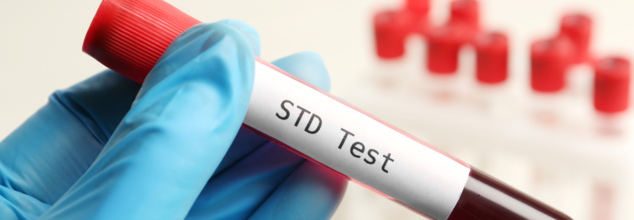- Health Conditions A-Z
- Health & Wellness
- Nutrition
- Fitness
- Health News
- Ayurveda
- Videos
- Medicine A-Z
- Parenting
- Web Stories
Can Yeast Infection Cause Pelvic Inflammatory Disease?

Credits: Canva
Pelvic Inflammatory Disease (PID) is an infection that affects the female reproductive organs. It often occurs when a sexually transmitted infection (STI) goes untreated, allowing bacteria to spread into the reproductive system. While yeast infections share some similar symptoms with PID, they are not considered a direct cause.
Yeast Infections vs. PID
Yeast infections, though uncomfortable, typically do not lead to PID. Experts explain that while yeast infections may cause similar symptoms, they don’t result in the same complications. In contrast, PID usually develops when a bacterial STI is left untreated. When harmful bacteria aren’t identified and treated in time, they can spread to the reproductive organs, leading to a more serious infection.
However, if a person has both a yeast infection and a bacterial STI, their chances of developing PID may be higher compared to someone who only has a bacterial STI. This is why it’s important to get proper treatment for all types of infections, as they can sometimes make the body more vulnerable to further complications.
STIs That Can Cause PID
STIs are grouped into bacterial, viral, and parasitic categories. Several bacterial STIs are commonly linked to PID, including:
- Chlamydia
- Gonorrhea
- Mycoplasma genitalium
However, experts note that once someone develops PID, they may be at greater risk of contracting other STIs, such as HIV or syphilis, if they are exposed. Because of this, many healthcare professionals recommend a full STI screening if someone has been diagnosed with PID.
Other Factors That Can Increase the Risk of PID
Infections aside, PID can also develop due to other types of bacteria entering the reproductive system. For instance, any event that causes damage to the cervix, such as vaginal delivery or miscarriage, can create an opportunity for bacteria to travel into the reproductive organs. Similarly, medical procedures that involve opening the cervix—like cervical cancer screenings, IUD insertions, or abortions—can also carry a risk of introducing bacteria.
In some cases, other vaginal infections, such as yeast infections or bacterial vaginosis, may contribute to the development of PID. If an STI is already present, these infections could potentially increase the likelihood of complications. This highlights the importance of treating all infections and not allowing them to persist untreated.
How to Address PID
If you're experiencing symptoms of PID or general pelvic discomfort, it’s crucial to seek medical advice. A healthcare provider can help identify the cause and suggest the right treatment plan. Most of the time, PID can be effectively treated with antibiotics, and early intervention can prevent the infection from worsening.
Experts recommend regular STI screenings to avoid the risk of PID. Catching and treating an STI early is much simpler and less harmful than managing the complications of full-blown PID. If it’s been a while since your last STI test, consider visiting your local health clinic or Planned Parenthood for a check-up.
The key takeaway is to stay proactive about your sexual health. Regular testing, prompt treatment, and proper care can go a long way in preventing PID and maintaining reproductive health.
Covid Is Here Again, But Here's How You Can Stay A Step Ahead Of It

Credits: Canva
Covid-19 is back again, and it is here to stay. Globally too, especially in the UK, the cases are surging. New variants with new symptoms are constantly being detected. This phenomenon is called the Long Covid. Several studies have shown that Long Covid is capable of affecting not just your respiratory system, but also your heart, brain, nervous system, gut, and more.
Many are also developing lingering fatigue, breathlessness, brain fog, chest pain and heaviness, palpitations, sleep problems, and mood changes.
However, there is a way to manage them. Experts from across the world have come up with 10 tips that can help you stay a step ahead of Covid.
Pacing
Many people with Long Covid experience post-exertional symptom exacerbation (PESE). Pacing involves balancing rest and short activity bursts, monitoring energy use, and stopping before exhaustion sets in. This approach helps reduce relapses and supports gradual recovery.
Journal Your Symptoms
Recording sleep, mood, meals, activity levels, medication, and symptom severity can reveal useful patterns. For instance, poor sleep might worsen brain fog. Such diaries also help clinicians evaluate whether treatments or rehabilitation plans are effective.
Sleep Hygiene Is A Must
Poor-quality sleep makes fatigue, pain, and concentration issues worse. Setting consistent sleep and wake times, limiting screens before bed, avoiding late caffeine, and having a calming bedtime routine can improve rest.
A Guided Rehabilitation
Tailored pulmonary and physical rehabilitation can aid recovery, especially for breathlessness and reduced stamina. However, overexertion may worsen symptoms. Gradual, supervised programmes designed by physiotherapists or rehab teams are recommended.
Practice Breathing Techniques
Practices like pursed-lip breathing, diaphragmatic breathing, and energy-conserving postures can ease breathlessness episodes. Learning safe methods from a physiotherapist can make these techniques more effective.
Treat Symptoms, One At A Time
Since Long Covid is a broad diagnosis, meaningful care often comes from addressing underlying issues. For example, palpitations may require heart rate checks, while severe fatigue may warrant tests for anaemia, thyroid conditions, or sleep disorders.
Brain Workouts To Beat Brain Fog
Memory lapses and concentration problems are common. Tools such as written lists, phone reminders, focusing on one task at a time, and short cognitive exercises can help. Cognitive pacing, working in short blocks with rest, works better than forcing through fatigue.
Take Care Of Your Mental Health
Anxiety and depression are frequent after COVID-19 and can worsen fatigue and pain perception. Therapy, including CBT where appropriate, and social support can reduce distress. Integrated programmes addressing both physical and mental health show the best results.
Keep A Check On Vaccine Updates
Vaccination not only reduces the risk of severe COVID-19 but may also lower the chance of developing Long Covid. Preventing infection remains the most effective protection.
Ensure A Support Plan
A clear care plan from specialists can guide you on warning signs, contacts for urgent help, and workplace adjustments such as reduced hours or flexible tasks. Where post-COVID clinics aren’t available, integrated primary and community care can be valuable.
India Health Summit 2025 | How Can India Become Mentally Fit And Healthy?

The Ministry of Health & Family Welfare noted India contributes to 18% of the global population, and as per the World Health Organization (WHO), the burden of mental health problems in India is 2433 disability-adjusted life years (DALYs) per 10000 population. The age-adjusted suicide rate is per 21.1 per 100000 population, and the economic loss between 2012-2030 is estimated at USD 1.03 trillion.
Another study published in 2024 in Cureus, quotes a previous study from early 2021 by UNICEF and Gallup that reveals that children in India were hesitant seeking help for mental health.
According to another 2024 study, the prevalence rate of mental health issues in children and teenagers in India was determined to be 23.33% in school and 6.46% in the community. The National Mental Health Survey 2016 also found that teenagers had a 7.3% prevalence of illness, distributed equally across boys and girls. However, it was greater in metropolitan metro areas, and the prevalence of anxiety issues was 3.6%, with depression-related conditions at 0.8%
What Is India Doing To Tackle The Mental Health Problem?
While the challenges remain, the government has taken several initiatives to tackle mental health issues. It was especially during the COVID-19 pandemic, when mental health problems rose in India, as a result the government set up a 24/7 helpline to provide psychosocial support, by mental health professionals, to the entire affected population, divided into different target groups viz children, adult, elderly, women and healthcare workers. Till date a total of 5,77,743 calls have been received on the helpline.
Furthermore, as part of the National Mental Health Programme, in 2024, 25 Centres of Excellence were sanctioned set up to train more postgraduate students in mental health and provide advanced treatment. 47 postgraduate departments in mental health were also established or upgraded in 19 government colleges. Mental health services were also introduced in 22 newly established AIIMS.
Read: India Health Summit 2025 | How India Is Bringing Innovation And Accessibility To Advance Cancer Care
Why Is India's Youth Struggling?
A 2025 study published in the International Journal of Indian Psychology notes certain risk factors due to which the Indian youth is struggling with mental health issues:
Family Environment and Parenting Style: Dysfunctional family dynamics lead to poor mental health outcomes in Indian youth
Substance Use and Peer Influence: Interaction with antisocial peers can lead to substance abuse and further lead to depression
Academic Pressure and Performance Anxiety: There is intense pressure to perform in academics, and the parental expectation that leads to risk of depression in youth
Socioeconomic Status: Youth from financially disadvantaged families face higher risks of depression and anxiety due to income struggles and financial stress
Violence, Abuse, and Trauma: Exposure to physical or sexual abuse significantly increases the likelihood of depression and anxiety in young people
Gender, Identity, and Relationship Issues: Struggles with gender, sexuality, or relationships heighten vulnerability to mental health crises, often worsened by stigma and isolation
Urban vs. Rural Settings: Urban youth report more mental health disorders than rural youth, linked to academic pressure, social isolation, and weaker family support
Pandemic-Related Stress: The COVID-19 pandemic intensified depressive symptoms among students, with women disproportionately affected due to added household burdens and limited social interaction.
What More Can Be Done To Make Indian Youth Mentally Fit And Healthier?
While there have been initiatives by the government to make mental health more accessible, there still exists a gap between the ratio of mental health experts and those who need it. Furthermore, there is a huge gap of accessibility between rural and urban areas. To understand how can one solve this, the upcoming Times Now Health Summit is hosting a session on Youth and Mental Health: Coping in the Age of Pressure and making India Fitter and Healthier. The session will feature experts from across various fields, including healthcare experts and mental health advocates.
The panel will feature Mayank Srivastava(IPS), Deputy Director General, Major Gen(Retd.) Vikram Dev Dogra, Dr. Praveen Gupta, Chairman, Marengo Asia International Institute of Neuro & Spine (MAIINS), Gurugram, and actress Pooja Bedi.
For more details, visit TIMES NETWORK INDIA HEALTH SUMMIT 2025.
Why Is This Doctor Asking President Trump To Take Alzheimer's Test?

Credits: AP and Neuropsychologysources
After two psychologists raised questions about the US President Donald Trump's mental health, saying that he showed signs of frontotemporal dementia (FTD), questions about his cognitive health is again intensified after Dr Narinder Kapur, a consultant neuropsychologist and visiting professor at the University College London said that president's behavior over the last six months has been "quite odd and strange," as reported by Express, UK.
Kapur said that Trump's suggestion that Canada should become the 51st US state. and his desire to "take over Greenland", and his controversial comments linking autism with paracetamol are really "bizarre". “Even though he’s probably been led a bit by [Robert F.] Kennedy [Jr.] on that, still for Trump to say the things he did was really quite odd and bizarre,” he said.
While Kapur did not diagnose Trump with dementia, he did suggest the possibility of frontotemporal dementia. “If one was thinking about the various possible dementias he’s got, certainly frontotemporal dementia is one of them, because some of his behavior has been really quite bizarre,” he said, adding that an Alzheimer’s test would help clarify concerns.
Is Trump Really Mentally Fit?
Trump, 79, has dismissed doubt about his mental fitness and calling himself the "stable genius". However, a report by the Guardian highlights growing number of unusual public appearances of Trump, which may suggest otherwise.
On his July trip to the UK, Trump unexpectedly veered into a monologue about windmills while meeting European Commission president Ursula von der Leyen. For two minutes, he claimed without evidence that wind turbines were driving whales “loco” and destroying scenery. “The abrupt changes in conversation are an example of Trump digressing without thinking, he’ll just switch topics without self-regulation,” Harry Segal, senior lecturer in psychology at Cornell University, told The Guardian.
Another instance is from a cabinet meeting intended to discuss global crises, Trump instead spoke for over 13 minutes about lamps, frames, and the color of paint used in the cabinet room.
What Are The Experts Saying?
Experts have pointed out that Trump's apparent tendency toward confabulation, which refers to confidently recounting events that never happened. The Guardian reported that Trump recently claimed his late uncle professor John Trump had taught Ted Kaczynski, the Unabomber, at MIT. The timeline makes this impossible: John Trump died in 1985, more than a decade before Kaczynski was publicly identified, and Kaczynski never studied at MIT.
Richard A. Friedman, professor of clinical psychiatry at Weill Cornell Medicine, told The Atlantic after one such performance: “If a patient presented to me with the verbal incoherence, tangential thinking, and repetitive speech that Trump now regularly demonstrates, I would almost certainly refer them for a rigorous neuropsychiatric evaluation to rule out a cognitive illness.”
Psychologist Dr. John Gartner, formerly of Johns Hopkins University, has tracked what he describes as a “major deterioration” in Trump’s language skills, motor skills, and impulse control. “If you go back and look at film from the 1980s, [Trump] actually was extremely articulate… now he really has trouble completing a thought and that is a huge deterioration,” Gartner told The Guardian.
He warned that Trump’s decline may accelerate: “At the rate he is deteriorating, it’s going to get worse. That’s my prediction.”
© 2024 Bennett, Coleman & Company Limited

